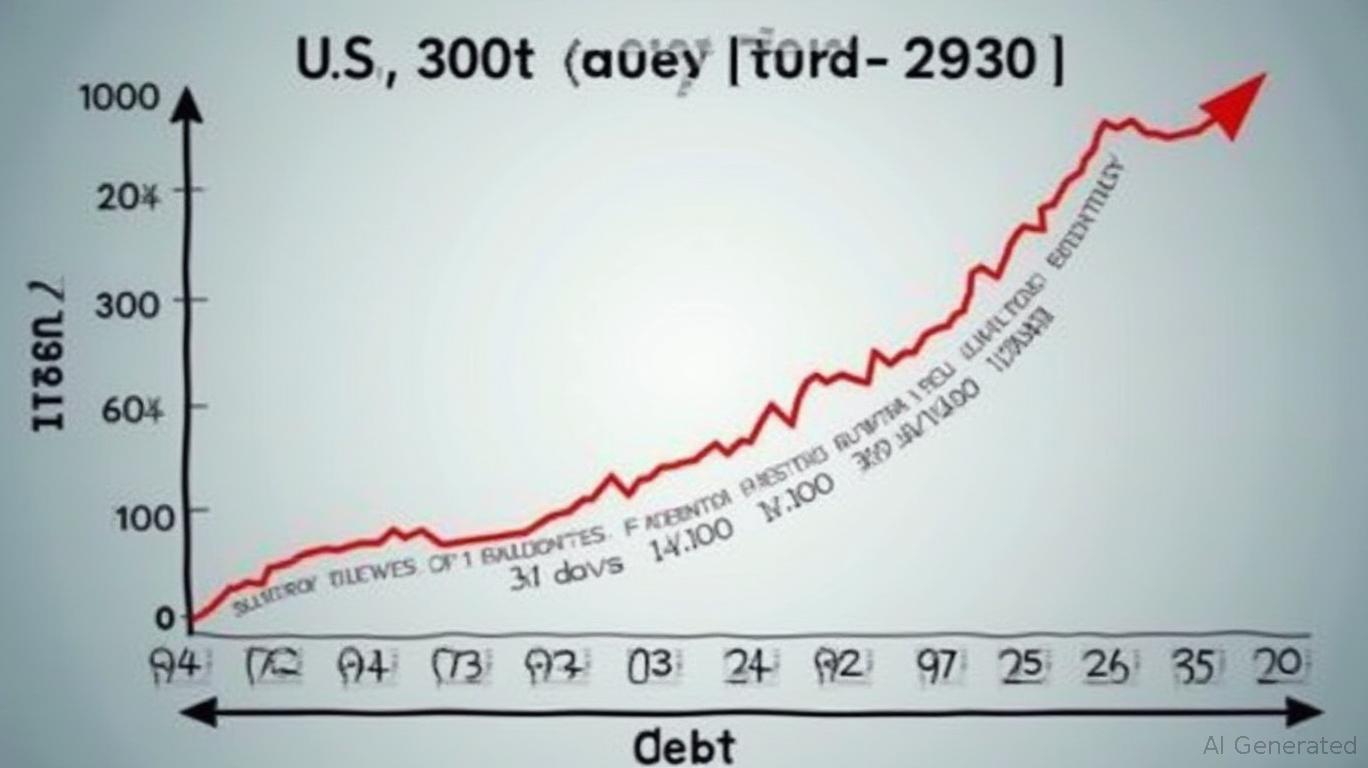Rising U.S. Debt Interest Costs: A Fiscal Time Bomb and the Case for Inflation-Protected Assets
The U.S. federal debt has reached unprecedented levels, with interest costs now consuming a record share of taxpayer dollars. This shift threatens not only federal budget priorities like infrastructure and healthcare but also the stability of the broader economy. For investors, the implications are clear: the era of easy fiscal policy is over, and portfolios must adapt to a world where inflation-protected assets gain prominence while equity exposure faces heightened risks.

The Escalating Interest Burden
The Congressional Budget Office (CBO) projects that federal interest payments will hit $952 billion in 2025, an 8% increase from 2024, and climb to $1.8 trillion by 2035. These costs now rank as the fourth-largest federal spending category, surpassing Medicare and defense in some years. By 2031, interest will consume 15.6% of total federal spending, exceeding its post-World War II peak of 15.4% in 1996.
This debt-driven spending surge leaves less room for critical investments. For instance, interest payments are already outpacing outlays for income security programs and Medicaid. The CBO warns that debt is projected to hit 118% of GDP by 2035, surpassing its post-war high of 106% in 1946, with no end in sight unless policies change.
The Economic Risks
The fiscal
poses three major threats:1. Fiscal Crowding-Out: Rising interest costs will force cuts to discretionary spending, stifling growth-oriented programs like infrastructure and R&D.
2. Inflationary Pressures: Persistent deficits could fuel inflation if the Federal Reserve feels compelled to raise rates to stabilize the dollar.
3. Global Borrowing Dependence: Foreign creditors now hold over $7 trillion in U.S. debt, exposing the economy to external capital shifts.
The CBO highlights that slower GDP growth (projected at 1.6% annually from 2025–2055) will further strain fiscal balances, as revenue growth lags behind debt service demands.
Investment Implications: A Shift Toward Inflation Protection
The twin risks of rising interest rates and fiscal austerity create a hostile environment for equities and traditional bonds. Here's why:
1. Equity Exposure Under Pressure
- Interest Rate Sensitivity: Higher rates directly hurt sectors like tech and utilities, while fiscal cuts could dampen earnings in defense and healthcare.
- Lower Growth Outlook: Slower GDP growth reduces the tailwinds for corporate profits, particularly in cyclical industries.
2. Inflation-Linked Assets Gain Ground
- TIPS (Treasury Inflation-Protected Securities): These bonds adjust their principal with inflation, offering protection against rising prices. The CBO's warning about persistent deficits hints at a higher inflation risk than the Fed's 2% target.
- Gold and Commodities: A hedge against currency debasement and fiscal instability.
- Short-Duration Bonds: To mitigate interest rate risk, focus on short-term Treasuries or high-quality corporate bonds with maturities under five years.
The historical correlation between rising yields and inflation suggests that TIPS and gold could outperform during periods of fiscal stress.
Portfolio Strategies for 2025 and Beyond
- Reduce Equity Allocations: Trim exposure to rate-sensitive sectors (tech, real estate) and shift toward dividend-paying defensive stocks (consumer staples, healthcare).
- Embrace Inflation Protection: Allocate 20–25% of a portfolio to TIPS, gold ETFs (e.g., GLD), or commodity funds.
- Avoid Long-Term Bonds: The risk of rising rates eroding bond prices is too high. Stick to short-term maturities or inflation-protected instruments.
- Monitor Fiscal Policy: A debt ceiling crisis or legislative action could trigger volatility, requiring agility in portfolio adjustments.
Conclusion
The U.S. fiscal crisis is no longer a distant threat—it's already reshaping budgets and markets. Investors who ignore the rising tide of interest costs risk exposure to inflation and equity underperformance. By pivoting toward inflation-protected assets and trimming speculative equity positions, portfolios can navigate this era of fiscal strain while preserving purchasing power. The message is clear: prepare for a world where every dollar of debt carries a price, and only the prepared will thrive.
The numbers don't lie—act accordingly.

Comments
No comments yet